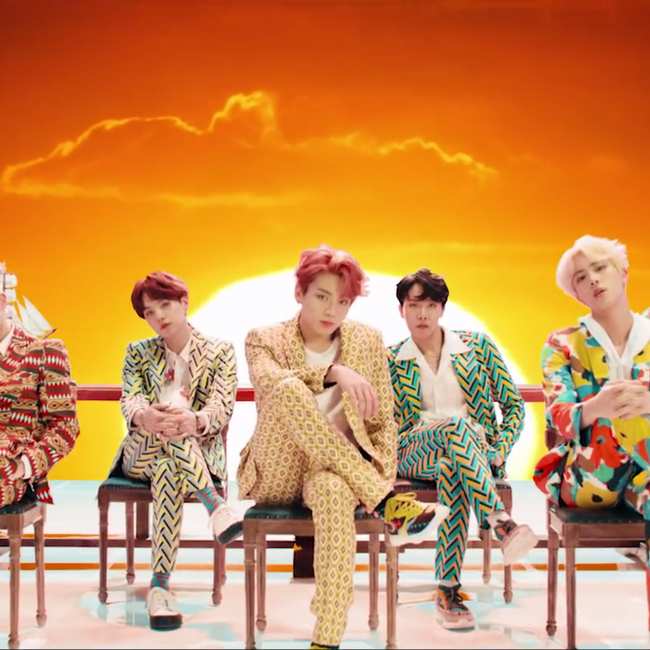It was around this time six years ago that we were in the midst of the summer of “Gangnam Style,” a seemingly silly song that would have an enormous impact on the future of international pop music.
PSY and his horse-inspired dance moves became an international sensation and it all happened thanks to YouTube — the platform that got Mr. Park Jae-sang noticed by Scooter Braun, leading to a U.S. record deal and “Gangnam Style” becoming a certified chart and radio hit in America. A year later, PSY still had the most-viewed music video ever, but the South Korean rapper’s follow-up releases admittedly lacked the buzz that surrounded his breakout. Instead, the PSY phenomenon resulted in opening up U.S. audiences to the idea that K-pop and Korean musicians were worthy of their attention. In July 2013, Google reported that views of Korean artists overall tripled in the year following the release of “Gangnam Style.” Official music videos from K-pop artists were viewed over 2.2 billion times globally pre-PSY, with that number jumping to more than seven billion views in the year afterwards. In America, K-pop consumption doubled, with superstars like Girls’ Generation, G-Dragon, HyunA, and Highlight (then known as Beast) earning top-viewership honors.
Fast forward to 2018 and BTS is breaking YouTube records with an even fiercer tenacity than PSY. The K-pop band recently smashed Taylor Swift’s streaming record with its video for new single “Idol,” now the most-viewed video in 24 hours and the fastest video to hit 100 million views. The future of BTS and the band’s K-pop peers looks extremely bright.
Per a Billboard report citing a YouTube spokesperson, “Idol” earned more than 45 million views in its first 24 hours (those tracking the numbers will tell you it was closer 56 million, but I’ll let you take that up with the powers that be) to edge out Tay’s “Look What You Made Me Do” video. The Reputation single scored 43.2 million on its first day out, undoubtedly fueled by Taylor’s pop culture comeback narrative after being outed as a “snake” by Kanye West and Kim Kardashian. “Idol” didn’t have a superstar feud attached to it nor any celebrity cameos. BTS could have asked Nicki Minaj to film the verse she laid down on the alternative version of the single, but instead released a new video that was an event in and of itself.
Altogether, those are a lot of eyeballs coming to YouTube, a platform designed to keep you watching, clicking, and interacting with its content like the best social media does. This, I would argue, has been key to K-pop’s digital growth.
Full disclosure that this New York City–based reporter watches a lot of K-pop videos. But upon opening an incognito browser on Google Chrome and watching “Idol” (again), I was not only suggested related BTS content (including a behind-the-scenes look at the “Idol” video shoot, a live performance of “Idol,” and a lyric video for BTS’ new album track “Trivia: Seesaw”), but also videos from other K-pop artists: including a “K-Pop Stars React” video starring MOMOLAND, plus recent releases by fellow boy bands Pentagon and their catchy hip-hop joint “Shine” and the spunky “My Pace” by Stray Kids — two acts who have drawn some comparisons to BTS for their self-producing styles.
Let’s be honest, BTS videos show seven good-looking guys with incredible voices and dance moves, coupled with visuals that tell deeper stories and require the viewer’s full focus. If even one of those aspects captivates a new BTS viewer, let’s say you’re a sucker for great dance formations, you’ll likely very much enjoy a video from Stray Kids or Pentagon. Curiously, I was also serviced a music video by teenage singer-songwriter Billie Eilish, who BTS member RM recently recommended to the band’s 16 million-plus followers on Twitter. (YouTube is smart.)
For the tens of thousands of new fans that are buying BTS’ music and selling out their tours to see RM, Jimin, J-Hope, Jin, Suga, V, and Jungkook in person, inevitably they will end up clicking around and likely finding something that tickles their fancy in a similar way. BTS only debuted in 2013 and, arguably, didn’t achieve breakout success until about 2015, but still album sales for K-pop artists were increasing in America thanks to acts like 2NE1 and EXO. Stateside tours were growing in terms of dates and revenue, and festivals like KCON were earning exponential attendance growth.
PSY’s “Gangnam Style” video breakout was a K-pop anomaly for many reasons. And while PSY undoubtedly made a hole in the wall for K-pop’s breakthrough, his style made it difficult for the K-pop scene at large to fit through. PSY delivered a high-energy EDM pop-rap track, which was indicative of the K-pop scene at the time, but many K-pop videos don’t have the same parody vibe, and many Korean artists do not look like PSY, making his connection to more K-pop tougher than the one BTS lays.
BTS stands out for its intricate and intimate approach, both to music and to social media, touching upon topics like online harassment, depression, and even police brutality. There’s a reason there are multiple BTS fan accounts with 1M+ Twitter followers (hi, @BTS_ARMY, @BTS_National, and @btsanalytics!) No K-pop artist is the same, the scene is too competitive for copy cats, and more artists are actually breaking out by breaking away from the hyper-manufactured image. But if history can tell us anything, more eyes on one K-pop act means more eyes on other K-pop acts. With BTS leading the way, if the streaming numbers are anything go by, the Korean music scene is establishing itself as a sustainable music genre in America.
